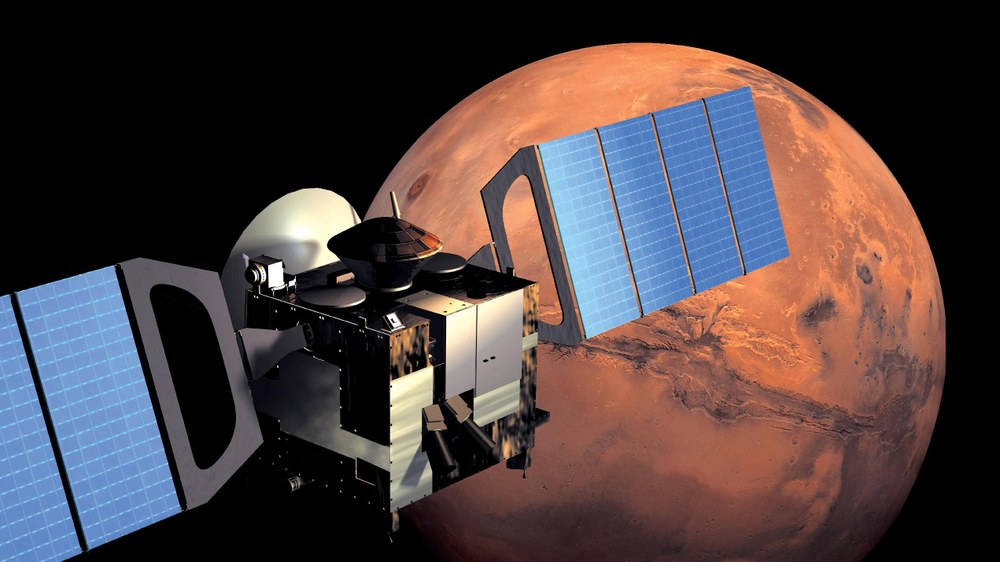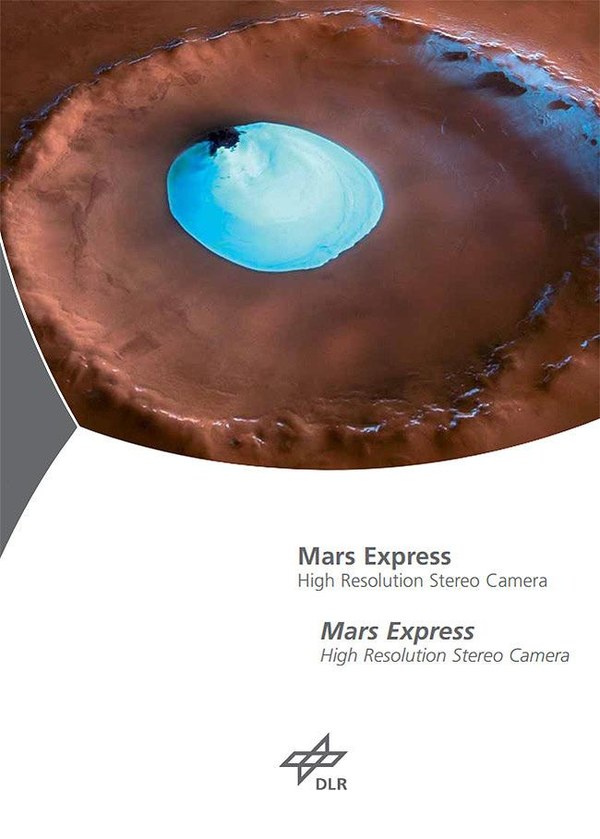The Mars Express mission
Mars Express opens a new era of intensive and important Mars research. In several ways, Mars Express is a pioneer mission in its exploration of our closest planetary neighbour. After Russian, American and Japanese missions, Mars Express is the first European mission to Mars.
Mars Express is the prototype for the so-called flexible ('F') missions in the context of the long-term science programme 'Horizon 2000 plus' of the European Space Agency (ESA).
With such missions, which are characterised by a very short preparation time and thus small costs, ESA can react quickly to current scientific questions. Thus, in 1999, it was decided that the launch of Mars Express was to take place in 2003. In 2003, Mars was unusually close to Earth, which permitted, because of the short journey time, a larger spacecraft to be assembled. The short course of the project led to low costs as large teams of enterprises and scientists could work independently. In addition, some of the Mars Express instruments and technologies had already been developed for ESA's Rosetta and the (failed) Russian Mars 96 mission.
Mars, due to characteristics such as rotation duration, seasons, atmosphere and distance to the Sun, is the most Earth-like planet in the Solar System. This makes it a particularly interesting research target with respect to comparative planetology.
Speculation over the existence of life on Mars has been going on for a long time. While the 1970s American Viking missions found nothing, it is probable that water in liquid form existed on Mars in the past and could possibly still provide a home for primitive life. Mars Express is closely involved in this research.
Mars Express was launched on 2 June 2003 from the Space Centre at Baikonur, Kazakhstan. The probe, consisting of an orbiter and a lander, arrived at Mars after a six-month flight in December 2003 and is since then in orbit. The orbiter is mapping the planet's surface as well as examining the atmosphere, structure and geology of Mars.
The lander Beagle 2, named after the ship which took Charles Darwin across the oceans, was to land on the surface of the planet and for six months examine Martian soil and rocks looking for signs of life. However, after its release from the orbiter for a planned Christmas Day 2003 touchdown, all attempts to contact Beagle 2 failed.
Beside the member states of ESA, Poland and the USA are also involved in the mission. The prime contractor for Mars Express is the company EADS Astrium based in France. A project group based at ESTEC, in Noordwijk, the Netherlands, is responsible for the mission. Russia's Starsem has responsibility for the rocket and Alenia Aerospazio, from Italy, the satellite integration. The Lander Beagle 2 was developed by the Open University in the United Kingdom.
Germany has a lot of involvement with Mars Express
It is closely involved with the High-Resolution Stereo Camera (HRSC), the Mars Radio Science Experiment (MaRS) and the PLUTO drill. There is also German participation in the Planetary Fourier Spectrometer (PFS) and the lander cameras. The HRSC camera was developed by DLR in Berlin and built by EADS Astrium in Friedrichshafen. DLR developed the drill in Cologne. The Universität der Bundeswehr (University of the Federal Armed Forces) in Munich cooperates on the mission and reports to DLR Cologne. ESA's Space Operations Centre (ESOC) in Darmstadt is responsible for mission control.


